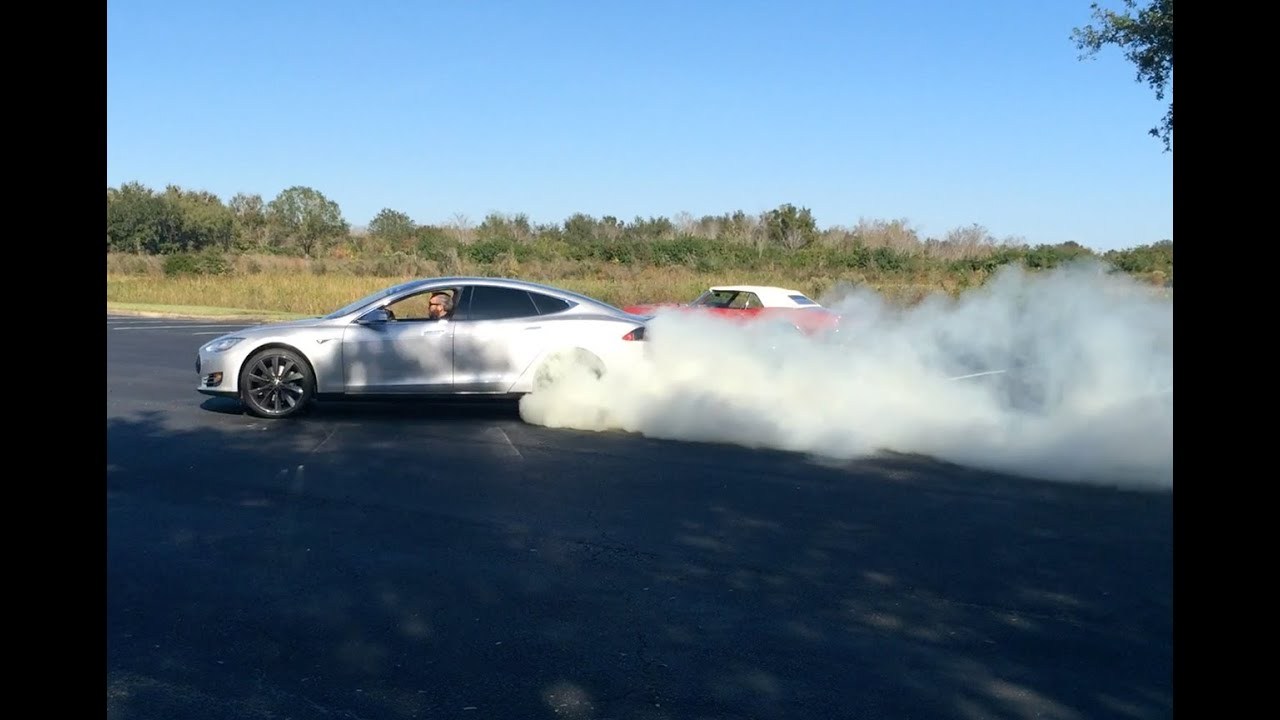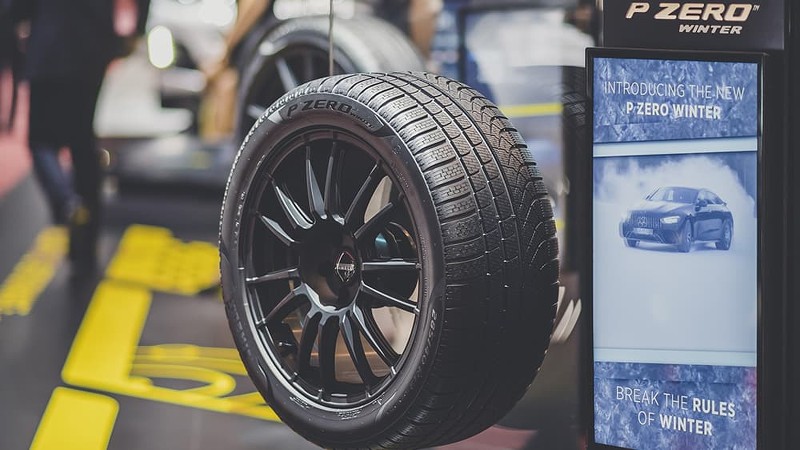
Só que ninguém parou até agora pensar o que acontece com... a borracha que se solta com o desgate dos pneus? Parece que niguém se preocupa com este detalhe... bem, quase ninguém.
De acordo com uma pesquisa da Emissions Analytics, as partículas de látex vulcanizado esaplhadas no meio ambiente por um veículo tem o potencial de ser mil vezes mais poluente que o resultado da combustão de um combustível fóssil com oxigênio.
O problema se torna ainda maior quando, além dos carros movidos à bateria, SUVs e veículos maiores e mais pesados predominam nas ruas, exigindo cada vez mais aderência dos pneus. Some-se a isso as péssimas condições das estradas, baixa pressão dos pneus, e até mesmo a baixa qualidade de marcas baratas.
Só que, diferentemente das emissões de gases, que sofrem cada vez mais com regulamentos e determinações governamentais, os pneus não possuem qualquer tipo de limitação no que diz respeito à poluição ambiental. Nem mesmo os freios, cujas pastilhas espalham ainda mais carbono, sofrem qualquer tipo de sanção.
O limite de emissões de gás carbônico a partir do sistema de exaustão de um veículo está em 4,5 miligramas por quilômetro. Multipliquemos este valor por mil, ou seja, coloquemos três zeros após a vírgula, e teremos 4.500 miligramas, considerado pela pesquisa o valor potencial de poluição causada pela borracha de pneus solta no meio ambiente pelo mesmo veículo: 4,5 gramas por quilômetro.
"É hora de considerar como fatores de poluição de um veículo automotor não somente a queima de combustíveis fósseis, mas também o desgaste de pneus e sistema de freios. Nossos testes iniciais sugerem que as partículas de carbono resultantes da deteioração destes dois últimos pode ser até mil vezes mais poluentes. O que é ainda mais intrigante é que apenas o primeiro é duramente regulado ao longo dos anos, mas as emissões de poluentes de itens de um veículo que não saem do sistema de exaustão nunca foram considerados um problema", disse Richard Lofthouse, pesquisador sêmior da Emissions Analytics.
"O desafio à indústria e às agências reguladoras é quase um completo buraco negro de informações ao consumidor, ignorado por regulamentos desatualizados e sempre focados nas emissões dos escapamentos. A curto prazo, a construção de pneus de alta qualidade é uma maneira de reduzir as emissões de carbono a partir deles, além, é claro, de mantê-los sempre inflados na pressão correta. Porém, a indústria automobilística deve também encontrar maneiras de reduzir o peso dos veículos. Ainda há dúvidas sobre uma regulamentação para combater este problema. Se isto não for possível, pneus mais resistentes ao desgaste serão necessários. A mudança tem que vir", acrescentou Nick Molden, CEO da Emissions Analytics.

* Tight regulation of exhaust emissions by the EU has meant that new cars emit very little particle pollution
* But tyre wear pollution is unregulated and can be 1,000 times worse, finds independent real-world testing experts Emissions Analytics
* Increased popularity of SUVs, larger and heavier than standard vehicles, exacerbates this problem – as does growing sales of heavy EVs and widespread use of budget tyres
* Fitting only high-quality tyres and lowering vehicle weight are routes to reducing these ‘non-exhaust emissions’
* Learn more about Emissions Analytics here: http://www.emissionsanalytics.com
Oxford, 6th March 2020: Pollution from tyre wear can be 1,000 times worse than what comes out of a car’s exhaust, Emissions Analytics has found.
Harmful particle matter from tyres – and also brakes – is a very serious and growing environmental problem, one that is being exacerbated by the increasing popularity of large, heavy vehicles such as SUVs, and growing demand for electric vehicles, which are heavier than standard cars because of their batteries.
What’s more, vehicle tyre wear pollution is completely unregulated, unlike exhaust emissions which have been rapidly reduced by car makers thanks to the pressure placed on them by European emissions standards. New cars now emit very little in the way of particulate matter but there is growing concern around ‘non-exhaust emissions’.
Non-exhaust emissions (NEE) are particles released into the air from brake wear, tyre wear, road surface wear and resuspension of road dust during on-road vehicle usage. No legislation is in place to limit or reduce NEE, but they cause a great deal of concern for air quality.
NEEs are currently believed to constitute the majority of primary particulate matter from road transport, 60 percent of PM2.5 and 73 percent of PM10 – and in its 2019 report ‘Non-Exhaust Emissions from Road Traffic’ by the UK Government’s Air Quality Expert Group (AQEG), it recommended that NEE are immediately recognised as a source of ambient concentrations of airborne particulate matter, even for vehicles with zero exhaust emissions of particles – such as EVs.
To understand the scale of the problem, Emissions Analytics – the leading independent global testing and data specialist for the scientific measurement of real-world emissions – performed some initial tyre wear testing. Using a popular family hatchback running on brand new, correctly inflated tyres, we found that the car emitted 5.8 grams per kilometer of particles.
Compared with regulated exhaust emission limits of 4.5 milligrams per kilometer, the completely unregulated tyre wear emission is higher by a factor of over 1,000. Emissions Analytics notes that this could be even higher if the vehicle had tyres which were underinflated, or the road surfaces used for the test were rougher, or the tyres used were from a budget range – all very recognisable scenarios in ‘real world’ motoring.
Richard Lofthouse, Senior Researcher at Emissions Analytics said: “It’s time to consider not just what comes out of a car’s exhaust pipe but particle pollution from tyre and brake wear. Our initial tests reveal that there can be a shocking amount of particle pollution from tyres – 1,000 times worse than emissions from a car’s exhaust.
“What is even more frightening is that while exhaust emissions have been tightly regulated for many years, tyre wear is totally unregulated – and with the increasing growth in sales of heavier SUVs and battery-powered electric cars, non-exhaust emissions (NEE) are a very serious problem.”
Nick Molden, CEO of Emissions Analytics said: “The challenge to the industry and regulators is an almost complete black hole of consumer information, undone by frankly out of date regulations still preoccupied with exhaust emissions. In the short term, fitting higher quality tyres is one way to reduce these NEEs and to always have tyres inflated to the correct level.
“Ultimately, though, the car industry may have to find ways to reduce vehicle weight too. What is without doubt on the horizon is much-needed regulation to combat this problem. Whether that leads to specific types of low emission, harder wearing tyres is not for us to say – but change has to come.”

Postar um comentário